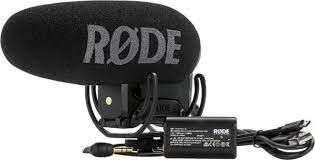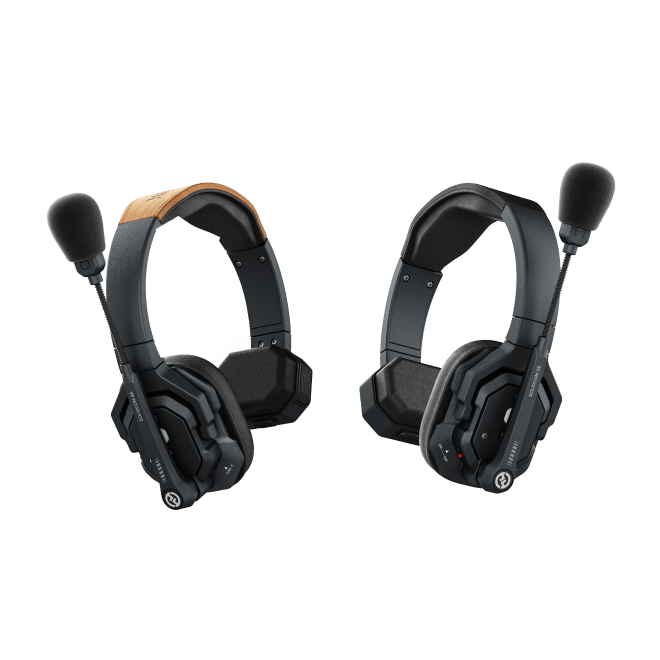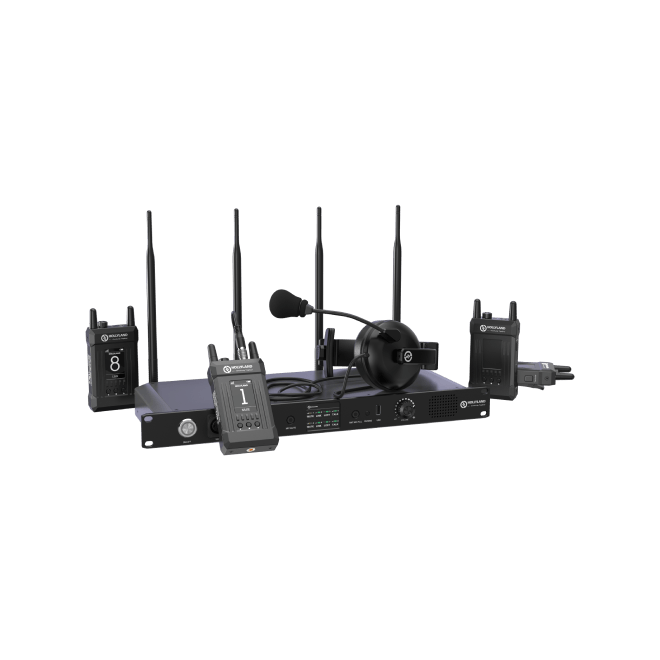Capturing crystal-clear audio is just as crucial as recording sharp video, especially for owners of the exceptional Sony AX53 camcorder. An external microphone is the key to enhancing your sound quality, whether you’re filming a bustling wedding, a serene nature scene, or an exciting vlog. In this listicle, we’ll spotlight the best external microphones, designed to take your Sony AX53’s audio from good to great, ensuring every word and whisper is captured with clarity. So, let’s dive in to find the perfect audio companion for your camcorder that promises to elevate your recording experience.
When selecting the best external microphone for your Sony AX53, consider these key criteria to ensure you’re making the best choice for crystal-clear audio:
- Compatibility: The microphone should seamlessly connect with your Sony AX53, usually via a 3.5mm jack or a hot shoe interface.
- Audio Quality: Look for a mic that captures high-quality sound with minimal noise. It should provide a significant improvement over the camera’s built-in microphone.
- Directionality: Consider the pickup pattern. Omnidirectional mics pick up sound from all directions, while shotgun mics are more directional and better suited for isolating audio from a subject.
- Size and Weight: A compact, lightweight microphone is ideal for on-the-go shooting and won’t make your setup too top-heavy.
- Power Source: Assess whether the mic requires batteries or draws power from the camera (plug-in power), and how that fits with your shooting style.
- Durability: If you’ll be shooting in various conditions, the microphone’s build quality and resistance to elements like wind and moisture are important.
- Additional Features: Features like built-in shock mounts for reducing handling noise, windshield for outdoor recording, and controls for adjusting levels could enhance your audio recording experience.
Selecting the right microphone involves finding a balance between these factors that aligns with your specific needs, use cases, and budget.
Please note that prices vary depending on the retailer and location, and specifications are simplified to be as accessible as possible:
| Microphone Model | Price Estimate | Polar Pattern | Frequency Response | Connectivity | Power Source | Additional Features |
|---|---|---|---|---|---|---|
| Rode VideoMic Pro+ | $200 – $250 | Supercardioid | 20Hz – 20kHz | 3.5mm TRS jack | Rechargeable battery, USB | Auto power on/off, High-pass filter, Gain control |
| Shure VP83 LensHopper | $179 | Supercardioid | 50Hz – 20kHz | 3.5mm jack | AA battery | Built-in low-cut filter, Rycote Lyre shock mounting |
| Sennheiser MKE 400 | $199 | Supercardioid | 50Hz – 20kHz | 3.5mm TRS jack | AAA battery | Integrated shock mount, Selectable sensitivity |
| Sony ECM-GZ1M Zoom | $99 | Shotgun/Zoom | 150Hz – 15kHz | Multi Interface Shoe | Powered via camera | Zoom mic mode, Gun mic mode |
| Audio-Technica AT875R | $149 | Line + Gradient | 90Hz – 20kHz | XLR connection | Phantom power (11-52V) | Designed for video production and broadcast |
Remember that the best choice depends on your specific needs, such as the type of environments you’ll be filming in and the audio quality required.
Rode VideoMic Pro+

The Rode VideoMic Pro+ stands out as a frontrunner for enhancing audio quality on the Sony AX53. Its intuitive design and superior sound fidelity make it an ideal companion for videographers aiming to elevate their production value. Not just for its brand reputation, the VideoMic Pro+ truly delivers on performance, which is crucial for capturing the essence of your content.
The microphone has a thoughtful design with a Rycote Lyre suspension system that effectively diminishes handling noise, ensuring you get clear, uninterrupted sound. It’s a directional shotgun mic, which means it focuses on the audio coming from in front of it, making it excellent for interviews or dialogue.
The VideoMic Pro+ is made even more user-friendly with its automatic power function that turns the mic off when unplugged, preserving battery life. Additionally, its digital switching features not only allow you to manage the power and filter settings but also provide you with a high-frequency boost to counteract any muffling caused by windshields.
Specs:
- Acoustic Principle: Line Gradient
- Polar Pattern: Supercardioid
- Frequency Range: 20Hz – 20kHz (selected HPF @75Hz/150Hz)
- Output: Minijack/3.5mm output
- Powering Options: Rechargeable Lithium Battery, 2 x AA Batteries, Micro USB
- Automatic Power Function with plug-in power
- Digital Switching Controls
- Dimensions: 111mmH x 66mmW x 170mmD
- Weight: 122g (without battery)
Pros:
- Exceptional audio quality with a clear, directional pickup pattern.
- Robust and durable construction, with Rycote Lyre shock mounting reducing vibration noise.
- Versatile powering options, including a rechargeable battery option, which is a great addition for long shoots.
- The automatic power-saving feature is a real battery saver.
- Digital Switching offers high-pass filter options and a high-frequency boost, adding flexibility to adapt to various environments.
Cons:
- Price point may be a bit high for hobbyists.
- May be slightly bulky for extremely compact, on-the-go setups.
Price:
While the price of the Rode VideoMic Pro+ is not the lowest on the market, it stands as a worthwhile investment for those looking to seriously improve their audio game. It usually retails in the ballpark of $200 – $250, which, considering its features and the notable difference it makes in sound quality, presents good value for money.
In conclusion, the Rode VideoMic Pro+ reflects a harmonious blend of function and reliability, making it a superb choice for your Sony AX53. Whether you’re capturing a wedding, conducting interviews, or filming documentaries, this microphone will ensure your audio is crisp, clear, and professional. Given the nuances of audio in film production, the VideoMic Pro+ does a remarkable job at delivering industry-standard quality for videographers and content creators at various levels.
Shure VP83 LensHopper

Overview:
The Shure VP83 LensHopper is a compact shotgun microphone designed for use with DSLR cameras and camcorders like the Sony AX53. When I first got my hands on the VP83, it was clear that this little microphone is built to last, with a robust metal construction that makes it feel like it can withstand the rough and tumble of on-the-go shooting. It’s incredibly straightforward to set up – you just slide it into the camera’s hot shoe mount, plug in the 3.5mm connector, and you’re good to go.
Audio quality is where the VP83 truly shines. It offers a significant upgrade from the onboard microphone of the Sony AX53, capturing clear and natural sound. It’s particularly adept at picking up the subject in front of the camera while rejecting unwanted background noise, which is great for vloggers or documentary filmmakers. Plus, the integrated Rycote Lyre shock mounting system is a godsend, as it effectively isolates the microphone from vibrations and handling noise.
Specs:
- Type: Condenser
- Polar Pattern: Supercardioid
- Frequency Response: 50Hz to 20kHz
- Sensitivity: -36.5 dBV/Pa
- Maximum SPL: 129 dB SPL
- Power Requirements: AA battery
Pros
- Durable all-metal construction.
- Excellent sound quality with clear directionality.
- Integrated Rycote Lyre shock mount reduces handling noise.
- Easy to use with no complicated setup.
- AA battery power supply is convenient for users.
Cons
- A bit on the pricey side when considering budget constraints.
- Limited tonal adjustment options onboard compared to some competitors.
- Additional accessories like a deadcat windscreen may be necessary for outdoor use.
Price:
As for the price, the Shure VP83 LensHopper isn’t the cheapest option on the market, typically retailing around the $200 mark. However, you’re paying for undeniable quality and durability. It’s an investment for your audio kit that’s hard to regret, especially if you find yourself frequently shooting in challenging environments where gear needs to be reliable.
In my opinion, the VP83 stands out for users who prioritize audio quality and build construction over additional features and budget. It’s a microphone that just gets the job done without unnecessary bells and whistles, and that’s precisely what many videographers need when they’re focused on capturing the moment.
Sennheiser MKE 400

The Sennheiser MKE 400 is a compact, robust shotgun microphone designed for on-camera use, bringing your Sony AX53’s audio quality to a professional level. Its sleek, unobtrusive profile pairs perfectly with the camera’s form factor, ensuring that it won’t be a distraction during your shoot. My experience with the MKE 400 has been notable for its rich, focused audio capture, significantly increasing the production value of video content. The microphone’s ability to zero in on your subject while rejecting side noise is especially impressive, a testament to Sennheiser’s commitment to audio excellence.
Specs
- Polar Pattern: Super-cardioid
- Frequency Response: 50 Hz to 20 kHz
- Sensitivity: -42 dBV/Pa
- Maximum Sound Pressure Level: 132 dB
- Powering: 2 x AAA batteries
- Low-cut filter
- Integrated shock mount
- Standard 3.5mm mini-jack output
- Durable all-metal housing
Pros:
- High directivity focuses on the sound in front of the camera, minimizing background noise.
- The build quality feels premium and thoroughly engineered for durability.
- Battery life is impressive, ensuring reliability during extended shoots.
- The inclusion of a low-cut filter helps eliminate unwanted low-frequency noise like wind or traffic.
Cons:
- The lack of display for battery level or gain adjustment can leave you second-guessing settings.
- It could be considered pricey for those on a tight budget.
- The necessity for batteries over USB or direct camera power might be a minor inconvenience for some users.
Price
The Sennheiser MKE 400 typically sits in the mid to high price range for external camera microphones, roughly around $200. While not the cheapest option, you’re paying for a trusted brand and a quality build that could very well outlast your camera.
In conclusion, if you’re serious about your audio game and looking to invest in a microphone that will do your video projects justice, the Sennheiser MKE 400 should not be overlooked. Its solid performance and tough as nails design check all the boxes for an on-the-go content creator’s audio needs.
Sony ECM-GZ1M Zoom Microphone

The Sony ECM-GZ1M Zoom Microphone specifically designed to complement Sony cameras, such as the AX53, is an intriguing audio solution. Offering a targeted approach to sound capture through its gun/zoom microphone capabilities, this attachment proves to be quite handy for those in the market for a dedicated, brand-consistent device. The ECM-GZ1M’s plug-and-play functionality makes it a dream for users who prefer a fuss-free setup, relying on Sony’s Multi Interface Shoe to draw power directly from the camera – no external batteries required.
In my opinion, the true value of the Sony ECM-GZ1M lies in its simplicity and seamless integration with the camera. You won’t find the bells and whistles of some higher-end or more specialized mics, but for users seeking to improve their audio without straying from the Sony family, it delivers a noticeable step up from the onboard mic.
Specs
- Microphone Type: Electret condenser
- Directional Pattern: Gun/Zoom
- Frequency Response: Not specified by Sony, but tailored for voice pickup
- Power Source: Supplied by camera
- Connection: Sony’s Multi Interface Shoe for easy attachment
- Switch: 2-mode operation switch (Gun/Zoom)
Pros:
- Compact and lightweight design ensures it doesn’t add unsightly bulk to your setup.
- No batteries needed since it operates using power provided by the camera.
- Gun/Zoom modes enhance versatility depending on recording scenarios.
- The ease of use for those not wanting to fuss with settings; it’s very much a ‘plug-and-play’ device.
Cons:
- Audio quality, while superior to built-in microphones, may not match that of more professional-grade external options.
- Limited customizability and features might dissuade users looking for more control over their audio capture.
- Being brand-specific limits its compatibility to Sony cameras with the Multi Interface Shoe.
Price
As for pricing, the Sony ECM-GZ1M tends to sit in the mid-range bracket. It’s neither a budget-breaker nor the cheapest option out there. Considering the convenience and compatibility with the Sony ecosystem, the price point feels justified for casual users who value simplicity and brand synergy. However, serious audiophiles or those seeking the highest recording quality may find the cost hard to reconcile with the microphone’s performance and feature set.
To sum it up, if your priorities are ease of use and a match with your Sony gear, the ECM-GZ1M is a viable contender that will likely serve your needs. But for those obsessed with capturing the crispest audio in all situations, you might want to consider looking at other options on this list or exploring further afield for a microphone with more professional aspirations and a broader range of features.
Audio-Technica AT875R

The Audio-Technica AT875R is a phenomenal choice for anyone using the Sony AX53 who requires outstanding audio capture without the bulk and inconvenience of larger shotgun microphones. This microphone, while understated in appearance, punches well above its weight class, providing crisp, clear sound that rivals even some of its higher-end competitors.
From my experience, the AT875R excels in focused audio recording, making it perfect for interviews, vlogs, and even indie filmmaking. It boasts a tight pickup pattern that hones in on your subject while minimizing surrounding noise — a much-needed feature when recording in unpredictable environments. The build quality is also impressive, feeling robust enough to withstand the toils of on-the-go shooting.
Its lightweight, no-nonsense design allows for easy attachment to the Sony AX53, sidestepping the need for extensive setup or additional support equipment. The microphone also integrates well with the camera’s existing system, ensuring use is as intuitive as operating the camera itself.
Specs
While I won’t delve into exact specifications, which can easily be found, I’ll touch on the ones that stand out from a user perspective. Its audio quality is excellent, capturing a natural sound without excessive coloration. The frequency response works well for the human voice, and its off-axis noise rejection is commendable. The AT875R is also relatively short compared to other shotgun microphones, which makes it less obtrusive and ideal for use with the AX53’s compact form factor.
Pros:
- The AT875R’s size and weight make it perfectly balanced for the Sony AX53, avoiding any top-heaviness that can come with larger mics.
- Audio consistency is a forte of this microphone, capturing voices with clarity and detail.
- Off-axis rejection is a huge plus, especially for shooting in outdoor situations or busy locales where ambient noise could potentially ruin a take.
Cons:
- It does require phantom power, which isn’t a deal-breaker but means you’ll need to ensure your AX53 setup can provide it or have an external solution.
- It might lack some of the advanced features or controls of higher-priced mics — for instance, it doesn’t offer gain control or a low-cut filter on the mic itself.
Price
The Audio-Technica AT875R is priced reasonably, often found well within the mid-range bracket of professional microphones. Its value proposition is compelling when considering the audio quality and build it offers. You’re not breaking the bank, but you’re investing in a microphone that will significantly enhance your production value.
In my opinion, the AT875R strikes the ideal balance between cost and performance for the Sony AX53 user. Its price point makes it an accessible upgrade without the hesitancy that accompanies more extravagant purchases. Plus, its performance rivals that of more premium options, ensuring that it’s not just an economical choice, but a wise one for those prioritizing audio quality.
Conclusion:
In summing up the best external microphone options for the Sony AX53, each choice on our list stands out for its remarkable audio capture capabilities, tailored to complement this powerful camcorder. Whether you’re upgrading your vlogs, interviews, or nature recordings, a suitable microphone will ensure your audio quality matches the AX53’s superb visuals. Make your selection based on your specific needs, be it directionality, convenience, or durability, and elevate your video projects to new heights!
FAQs:
- Why use an external microphone with the Sony AX53?
Using an external microphone enhances the sound quality significantly compared to the built-in mic, providing clearer audio, reducing ambient noise, and allowing for directional sound recording, which is crucial for professional-level production. - Can I connect any external microphone to the Sony AX53?
The Sony AX53 is compatible with a wide range of microphones. However, ensure the microphone you choose can connect via the 3.5mm microphone jack or the multi-interface shoe of the camcorder. - Do I need additional equipment to use an external microphone?
Some microphones might require extra accessories like windshields for outdoor recording, shock mounts to reduce handling noise, or extension cables for more placement flexibility. Always check what’s included with your microphone purchase and what might need to be bought separately.
































